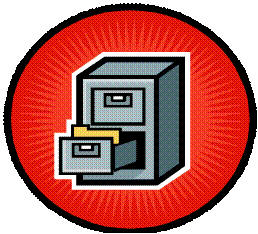Introduction to MARC,
Metadata, and RDA
![[library bankers lamp]](librarybankerslamp2.gif)
Presented by Lorraine Lanius
Vermont Department of Libraries
Spring 2011
[next]
![[library bankers lamp]](librarybankerslamp2.gif)


![[book]](book.gif)
![[future]](futureRDA3.gif)
| Type: a | Elvl: I | Source: - | Audn: g | Ctrl: - | Lang: eng |
| BibL: m | SpFm: - | Conf: 0 | Biog: - | MRec: - | Ctry: vtu |
| Cont: b | GPub: - | LitF: 0 | Indx: 1 | ||
| Desc: a | Ills: a | Fest: 0 | DtSt: s | Dates: 2000 |
![[Fixed Field Stinky Cheese]](FixedFieldStinkyCheese.gif)
| OCLC DESIGNATION | MARC21 DESIGNATION | FIELD NAME |
| OCLC Control # | 001 | Control Number |
| Rec stat: | leader 05 | Record status |
| Entered | 008/00-05 | Date record added to database |
| Replaced: | Date of last replace | |
| Used: | 005 | Date of last use of record |
| Type: | leader 06 | Type of record |
| ELvl: | 008/17 | Encoding level |
| Srce: | 008/39 | Cataloging Source Code |
| Audn: | 008/22 | Target audience |
| Ctrl: | leader 08 | Type of control |
| Lang: | 008/35-37 | Language code |
| BLvl: | leader 07 | Bibliographic level |
| Form: | 008/23 | Form of item |
| Conf: | 008/29 | Conference publication |
| Biog: | 008/34 | Biography |
| MRec: | 008/38 | Modified record code |
| Ctry: | 008/15-17 | Place of publication, production, or execution |
| Cont: | 008/24-27 | Nature of contents |
| GPub: | 008/28 | Government publication |
| LitF: | 008/33 | Literary form |
| Indx: | 008/31 | Index |
| Desc: | 008/18 | Descriptive cataloging form |
| Ills: | 008/18-21 | Illustrations |
| Fest: | 008/30 | Festschrift |
| DtSt: | 008/06 | Type of date/Publication status |
| Dates: | 008/07-10,11-14 | Date 1, date 2 |
| 010 | Library of Congress control number |
| 040 | Cataloging source |
| 020 | International Standard Book Number |
| 037 | Source of acquisition |
| 041 | Language code |
| 050 | Library of Congress call number |
| 090 | Locally assigned Library of Congress call number |
| 049 | Local holdings |
| 1xx | Main entry heading (personal, corporate or conference) |
| 245 | Title statement |
| 246 | Varying form of title |
| 250 | Edition statement |
| 260 | Publication, Distribution, etc. (Imprint) |
| 300 | Physical description |
| 490 | Series statement, not traced or traced differently |
| 500 | General notes |
| 504 | Bibliography, etc. note |
| 505 | Contents note |
| 520 | Summary, abstract, annotation, scope, etc. note |
| 590 | Local notes |
| 6xx | Subject access fields (added entries) |
| 700-740 | Added entry-Uncontrolled related/analytical title |
| 800-840 | Series added entries (traced) |

| 15 | Added title page title |
| 2 | Alternate form of work(s) in title |
| 1 | $i At head of title: $a |
| 16 | Caption title |
| 1 | $i Colophon title: $a |
| 2 | Corrected form of title |
| 14 | Cover title |
| 12 | Distinctive title |
| 1 | $i Vol. 2 has title: $a |
| 13 | Other title |
| 30 | Other title information (245 $b) |
| 31 | Parallel title (245 $b) |
| 30 | Part title access (245 $b) |
| 30 | Portion of title proper (245) |
| 17 | Running title |
| 3 | Spelled out form of symbols |
| 18 | Spine title |
| 30 | Subtitle access (245 $b) |
![[Levels]](Levels.gif)
![[Fixed Field On the Bus]](FixedFieldOnTheBus.gif)
![[Checklist]](Checklist.gif)
![[assignment]](assignment.gif)
![[oranges and apples]](OrangesApples.gif)
![[gateway]](gateway.gif)
![[gateway]](gateway.gif)
![[North Carolina]](NorthCarolina.gif)
![[Filing Cabinet Indicators]](FilingCabinetIndicators.gif)
![[assignment]](assignment.gif)
![[String puppet]](StringPuppet.gif)

![[man doing work]](ManDoingWork.gif)
![[Oops Sign]](Oops.gif)
![[Fixed Field Quotations]](FixedFieldQuotations.gif)
![[Circled Reference]](CircledReference.gif)
![[Fixed Field Twain]](FixedFieldTwain.gif)
![[Variable Field Twain]](VariableFieldTwain1.gif)
![[Variable Field Twain]](VariableFieldTwain2.gif)
![[Variable Field Twain]](VariableFieldTwain3.gif)
![[Fixed Field Plaidy]](FixedFieldPlaidy.gif)
![[Variable Field Plaidy]](VariableFieldPlaidy.gif)
![[Fixed Field Holt]](FixedFieldHolt.gif)
![[Fixed Field Potatoe]](FixedFieldPotatoe.gif)
![[PotatoeChef]](PotatoeChef.gif)
![[Fixed Field Prince]](FixedFieldPotatoe.gif)
![[Fixed Field Capone]](FixedFieldCapone.gif)
![[Look]](Look.gif)
![[Spyglass]](Spyglass.gif)
![[Past Present Future Sign]](PastPresentFutureSign.gif)
![[Magnifying Glass]](MagnifyingGlass.gif)
![[Rooster Weather Vane]](rooster.gif) Communication standards
Communication standards![[RDA Report]](AntonyGordon.gif)
![[Dentist]](Dentist.gif)
![[Oxygen Editor]](OxygenEditor.gif)
![[Leprechaun Assignment]](Leprechaun.gif)
![[Speaker at Podium]](Podium.gif)
![[Future Scenarios]](FutureScenarios.gif)
![[Scaffolding]](Scaffolding.gif)
![[Linked Data]](LinkedData.gif)

![[Future of MARC]](MARCfuture.gif)
![[future]](futureRDA3.gif)
![[Thank You]](ThankYou.gif)
![[DOL Logo]](DOLlogo.gif)